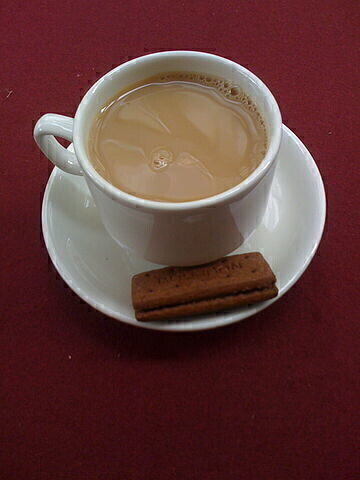HPLC, UHPLC
Oldest Evidence of Tea Discovered!
Feb 12 2016
It could be argued that people in the UK are obsessed with tea — and I don’t mean the main meal that people in the North of England eat at 6pm. After water, tea is probably the most widely consumed drink in the world and in the UK over 165 million cups of tea are consumed every single day.
So put the kettle and a tea bag in the cup — and while the kettle boils have a think about why you cannot make a good cuppa on Everest — and discover a little more about tea and how chromatography has helped find possibly the oldest cup of tea ever.
What is tea?
Tea is made by pouring boiling water over leaves from the plant Camellia sinensis to extract aromatic and organic flavour compounds. The essential tea components such as caffeine, volatiles, polyphenols and amino acids — all impact the flavour of the tea.
The different types of tea are largely due to the processing of the leaves after picking, with the following varieties popular in the UK:
- Black Wilted, crushed and oxidized
- White Wilted and unoxidized
- Green Unwilted and unoxidized
- Oolong Wilted, bruised and partially oxidized
As soon as the leaves are picked, they start to wilt and oxidize as the enzymes present in the leaves react to break down the chlorophyll and release tannins. The process is controlled by applying heat and/or drying the leaves.
Such is the reverence that tea holds over us, that George Orwell wrote a short essay on the subject ‘A Nice Cup of Tea’ and the British Standards Institute has even issued a standard BS 6008:1980 on making a uniform cup of tea.
Tea — a potted history
Although tea has been consumed in the UK for over 350 years — we are youngsters in the history of tea drinking. Legend has it that the Chinese emperor Shen Nung was sitting beneath a tree as his servant boiled some water for drinking. Some leaves blew into the water and the emperor decided to try the resulting drink — and the story of tea was born.
A recent paper published in the journal Scientific Reports, — ‘Earliest tea as evidence for one branch of the Silk Road across the Tibetan Plateau’ — reports on one groups claim to have found the earliest evidence for tea drinking. The team analysed plant residues using both GC-MS and UPLC/MS to identify caffeine and theanine — an amino acid found in tea — in the residues. Radiocarbon dating was used to date artifacts found at the sites investigated, giving a date of 2100 years ago.
A recently developed chromatographic technique, hydrophilic interaction chromatography (HILIC), has been used to analyse caffeine and the method is discussed in this article, A Simple, Generally Applicable HILIC Method Development Platform Based Upon Selectivity.
So why can’t you make a good cuppa on Everest? The reduced air pressure means water boils at well below 100?C — good tea needs water at between 97 - 100?C to fully extract the flavours.
Image via Wikimedia commons
Digital Edition
Chromatography Today - Buyers' Guide 2022
October 2023
In This Edition Modern & Practical Applications - Accelerating ADC Development with Mass Spectrometry - Implementing High-Resolution Ion Mobility into Peptide Mapping Workflows Chromatogr...
View all digital editions
Events
Apr 23 2024 Kintex, South Korea
Apr 23 2024 Seoul, South Korea
Apr 28 2024 Montreal, Quebec, Canada
May 05 2024 Seville, Spain
May 15 2024 Birmingham, UK














